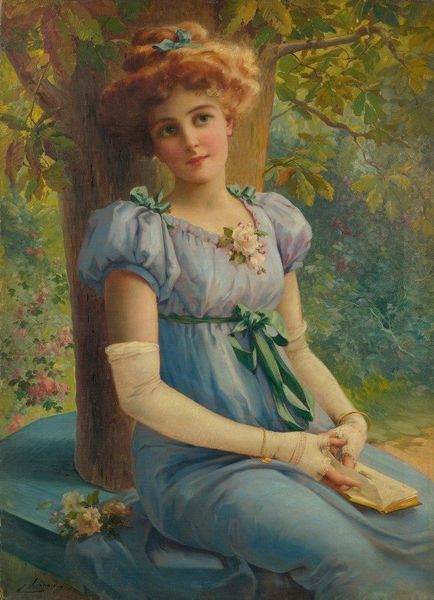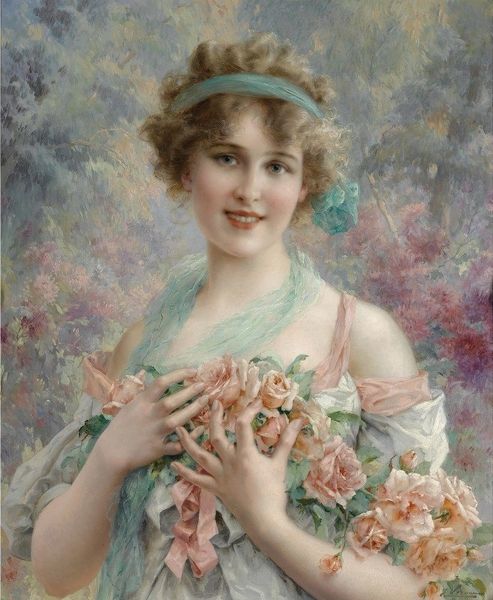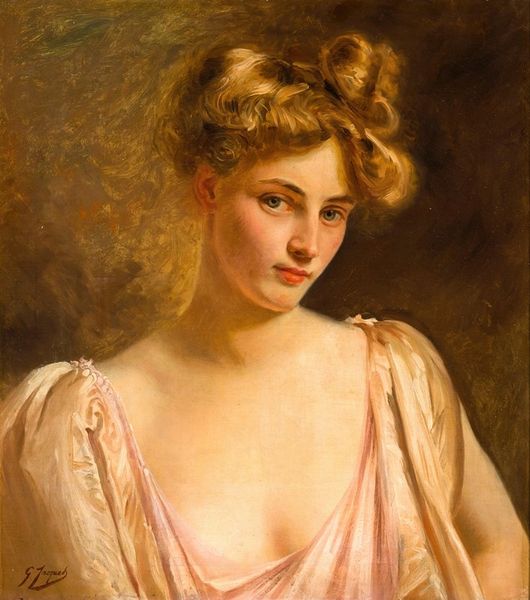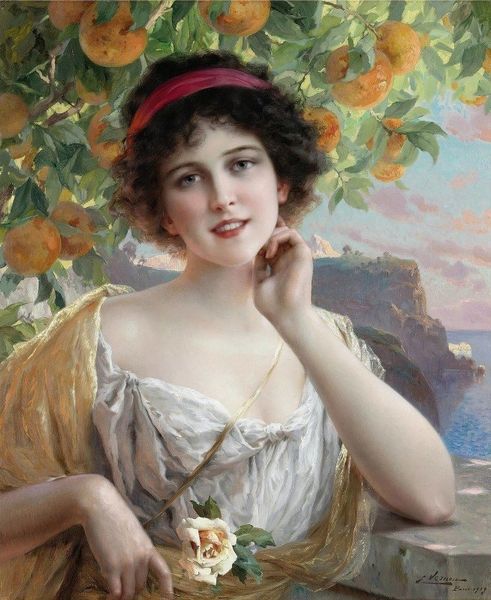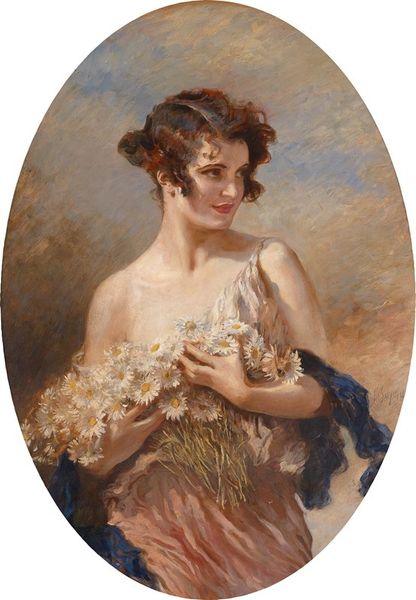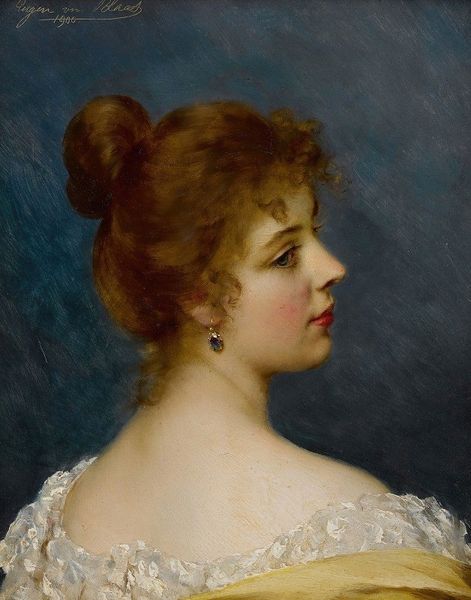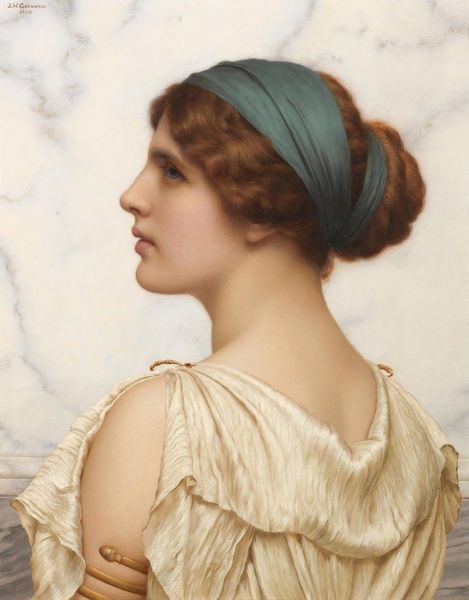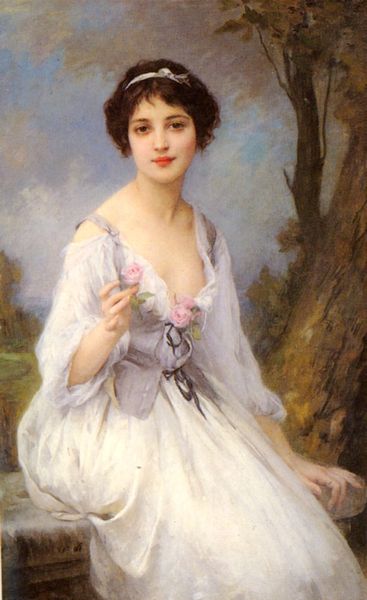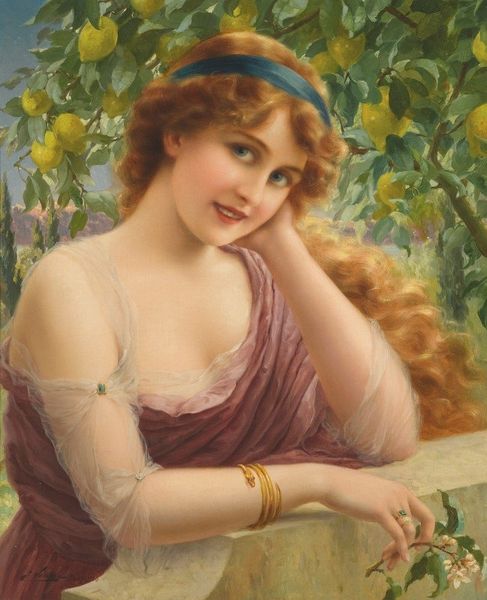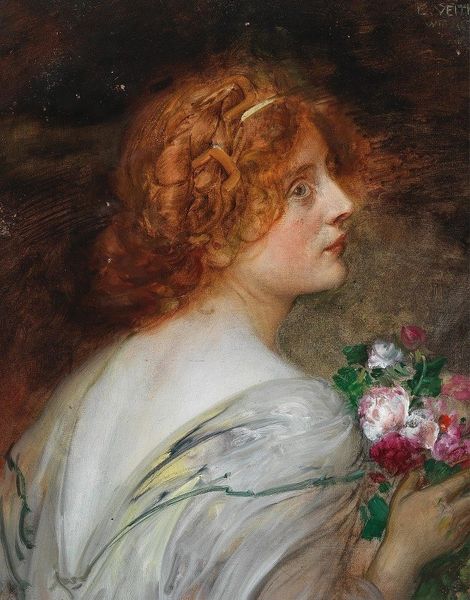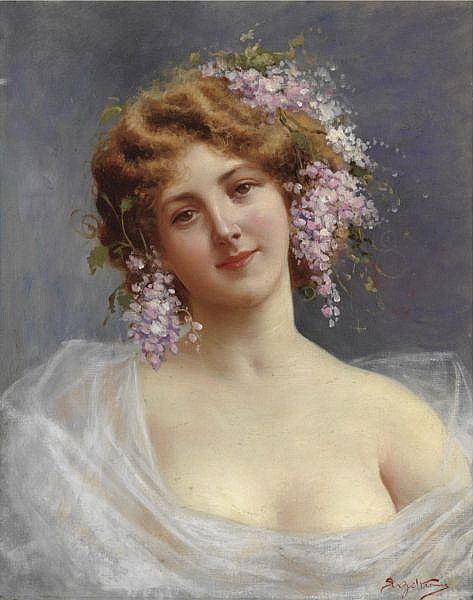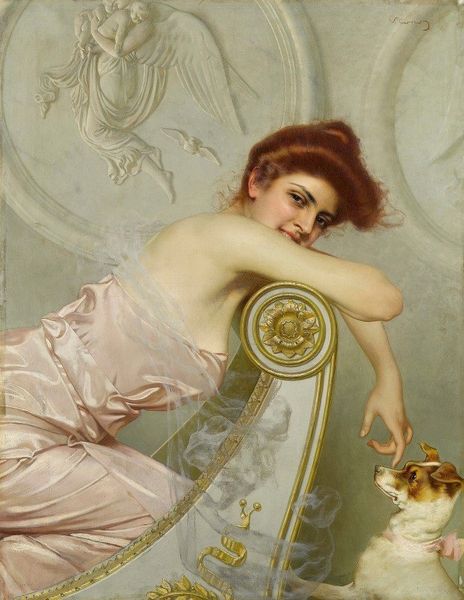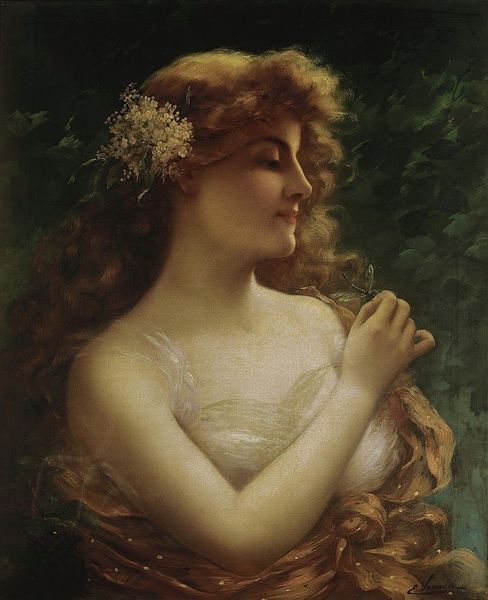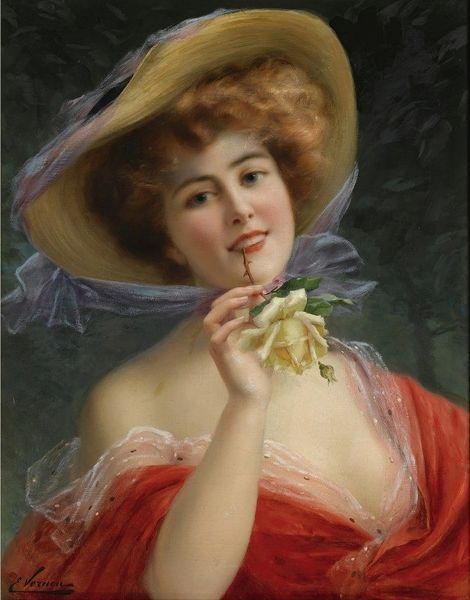
painting, oil-paint
#
figurative
#
painting
#
oil-paint
#
figuration
#
romanticism
#
genre-painting
Copyright: Public Domain: Artvee
Curator: Let’s turn our attention to "Young Woman with a Sprig of Lilac" by Emile Vernon, a lovely genre painting rendered in oil on canvas. The woman gazes back at us, a handful of lilac flowers resting gently on her shoulder. It certainly evokes a certain sweetness. Editor: My first impression is of something rather...perfumed. Almost cloying in its sweetness. There's a definite Romanticism at play, but the overabundance of rosy hues and soft focus feels calculated, even performative. Curator: Calculated, perhaps, in the sense that Vernon, like many artists of his time, was engaging with a specific market and its demands. The means of production – the application of oil paint to create this idealized image – reflects certain societal values around beauty and femininity at the time. Editor: Exactly! And what were those values? This painting doesn’t exist in a vacuum. It's reflecting, and also perpetuating, a very specific, constrained view of womanhood – passive, decorative, meant to be gazed upon. Look at the way she’s posed; even the lilac seems strategically placed as another embellishment. There's a real objectification occurring here. Curator: Objectification is a strong word, but I see your point. However, considering this as "genre-painting", what could be understood about everyday leisure class experiences, of say... flower picking and courting? I agree that the way the light catches the folds of her gown suggests a meticulous approach. I also see brushwork focused not just on verisimilitude but also on the luxurious appeal. Editor: The very concept of ‘leisure’ is a class-based privilege, isn't it? I find myself drawn to the tension here. What does it mean to elevate a mundane moment—holding a flower—into high art? Is it art for the sake of beauty, or is it about reifying the status of a specific social group? Curator: I think it’s both. It captures an ephemeral beauty, but also solidifies particular notions of femininity. A delicate subject that’s meticulously composed. Editor: And, critically, it does so with oil paint, a material itself loaded with history, associations with wealth and power! I wonder about the workshops of the time where pieces like this were mass produced? I would also be curious about where exactly that Lilac came from; what were the politics and social structures of floral industries? Curator: So, looking past the surface level then? Fascinating points! Thinking about this and understanding both process and gender, does indeed cast it under a completely new light. Editor: It layers it with significance! Understanding what went into it, literally and figuratively, it creates a depth that helps explain its persistent appeal while acknowledging its problematic underpinnings.
Comments
No comments
Be the first to comment and join the conversation on the ultimate creative platform.
